13th April 2020 Current Affairs in English

13th April 2020 Current Affairs in English – Today Current affairs PDF link available below.
Dear Aspirants, we (Vetripadi.com team) have come with Daily Current affairs analysis. It is prepared to crack the various competitive exams. We are here to make sure your preparation easy. We will update the current affairs every day. It will help for both preliminary and mains (facts oriented with background information) for your preparation. We need you support.
VETRIPADI Daily Newsletter
வெற்றிப்படி.காம் | வெற்றிக்கு நீ படி!!!
Daily Current affairs for Competitive
Exams (UPSC, TNPSC, SSC)
13th APRIL 2020
TABLE OF CONTENTS
- Heritage crafts village in Odisha wears a deserted look
- Ban on Meru Jatra festival
- 6 theme-based microsites to promote tourism spots
- DST moots study on yoga against viruses
- 30 ‘foreigners’ dead in detention
- Congo records second Ebola
- First batch of Rafales likely to fly in late
- Trade in tatters
1. Heritage crafts village in Odisha wears a deserted look
Information in News
- Uncertain about their future, Pattachitra artists want virtual platform to sell paintings
- Tourists, the foundation of livelihood for 140-odd families of Raghurajpur, are no longer welcomed due to COVID-19 pandemic has robbed the livelihood of the artists here.
- Making of Pattachitras, traditional paintings in which mythological, religious stories and folk lore are told through intricate canvasing, has been principal vocation of most villagers here. On an average, an artist sells paintings worth ₹15,000 to ₹20,000 per month – enough to lead a simple life in the village.
- The paintings’ trade had recently picked up after it was badly impacted by last year’s cyclone Fani that had spoiled many artworks’.
- Villagers want an online platform through which their paintings could be sold and tourists may not come physically to buy products.
Pattachitra
- Pattachitra style of painting is one of the oldest and most popular art forms of Odisha.
- The name Pattachitra has evolved from the Sanskrit words patta, meaning canvas, and chitra, meaning picture.
- Pattachitra is thus a painting done on canvas, and is manifested by rich colourful application, creative motifs and designs, and portrayal of simple themes, mostly mythological in depiction.
- Some of the popular themes represented through this art form are
- Thia Badhia – depiction of the temple of Jagannath;
- Krishna Lila – enactment of Jagannath as Lord Krishna displaying his powers as a child;
- Dasabatara Patti – the ten incarnations of Lord Vishnu;
- Panchamukhi – depiction of Lord Ganesh as a five-headed deity.
- Pattachitra, engaging the craftsmanship of the chitrakars in using naturally available raw materials to bring about indigenous paints.
- The patachitra “chitrakars” (painters) are temple functionaries who live in and around the temple town of Puri.
- Now, the community of chitrakars have spread beyond Puri district, and they have also begun using a variety of non-religious themes in their paintings.
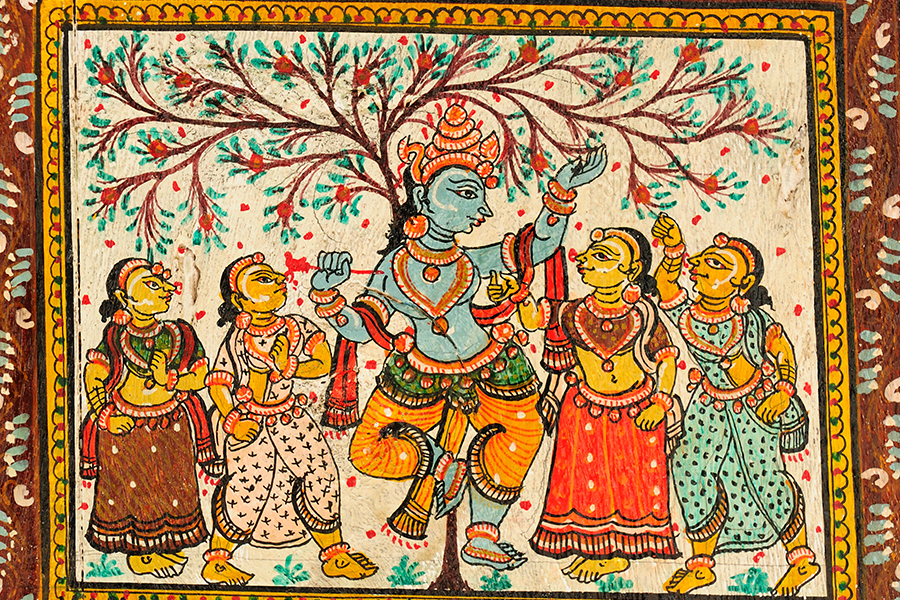
Cyclone Fani
- It is the first severe, cyclonic storm to have formed in April in India’s oceanic neighbourhood since 1976, according to the records of the India Meteorological Department (IMD).
- It is a consequence of global warming and it is forming due to the warming of the Bay of Bengal basin.
- Tropical cyclones in the Indian neighbourhood begin as depressions or a gradual build-up of warm air and pockets of low pressure. About 35% of such formations intensify to cyclones and only 7% intensify to very severe cyclones.
- Fani’ was classified as Extremely Severe Cyclonic Storm. Second highest category classification.
- The name ‘Fani’ was proposed by Bangladesh.
- The Cyclone ‘Fani’ which had started its journey from South-East Bay of Bengal has finally made a landfall in Odisha after more than 10 days at sea.
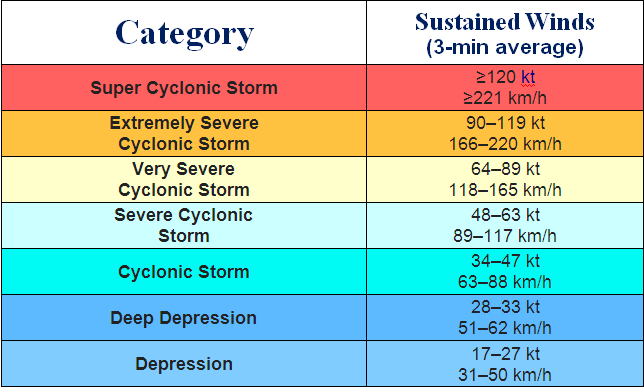
Tropical Cyclones
- Tropical Cyclones are massive rotating storm systems.
- They have a low-pressure centre called the ‘eye of the storm’.
- The winds in a tropical cyclone blow in a counterclockwise direction in the Northern hemisphere and clockwise in the southern hemisphere.
- Coriolis force plays an important role in the formation of these cyclones.
- Thus, these cyclones are formed in latitudes between 10 and 30 degree N and S of the equator.
- They are not formed near the equator as the Coriolis force is zero at the equator.
- A depression first emerges in the sea and then transforms into a tropical cyclone.
- It then moves towards the land where there is low pressure and makes landfall.
- Tropical cyclones bring with them destructive forces – high-speed winds, sea surge, and torrential rains.
Pattachitra
https://knowindia.gov.in/culture-and-heritage/folk-and-tribal-art/pattachitra-painting.php
Reference for News
2. Ban on Meru Jatra festival
Information in News
- Odisha’s Ganjam district administration has banned the Meru Jatra festival and congregations related to it at temples on the occasion of Mahavishub Sankranti on Monday.
- Meru Jatra marks the end of 21-day-long festival of penance named ‘Danda Nata’.
- Mahavishub Sankranti is also start of the Odia New Year. On this day, thousands of devotees used to gather at the Tara Tarini hill shrine and other temples.
- Earlier, the administrations had banned the famous Chaitra festival at Tara Tarini hill shrine that attracts lakhs of devotees.
Danda Nata
- Danda Nata is one of the most important traditional dance festivals in the Ganjam District, the heartland of ancient Kalinga Empire.
- The Danda Nata festival is held in the month of Chaitra of every year. The Participants of Danda are called Danduas (also known as Bhoktas) and they pray Goddesses Kali and Shiva during this 13, 18 or 21-day Danda period.
- Danda begins on an auspicious day before the Chaitra Sankranti or Meru Parba with traditional worship and fasting.
- Only male persons take part in this festival. The participants are known as the Bhoktas.
- All the Bhoktas or ‘Danduas’ lead a very pious life for all these days during the festival and they avoid eating meat, fish or cohabiting during this period.
Reference
https://www.thehindu.com/news/national/other-states/ban-on-meru-jatra-festival/article31326060.ece
3. 6 theme-based microsites to promote tourism spots
Information in News
- Kerala Tourism has geared up for the post-COVID-19 era by coming up with six theme-based microsites in the official website to promote destination and tourism products and get an upper hand in the virtual marketing among brands.
- 6 New microsites that have been featured
- Ayurveda
- Yoga
- Kalaripayattu, an ancient martial art indigenous to the State
- Temples of Kerala
- Judaism in Kerala and
- Discovering Malabar

4. DST moots study on yoga against viruses
Information in News
- It may address improving immunity, respiratory system and interventions to overcome stress, anxiety and depression
- The Department of Science and Technology (DST) has invited proposals to study appropriate intervention of yoga and meditation in fighting COVID-19 and similar kinds of viruses.
- Teams of scientists, clinicians and experienced practitioners of yoga and meditation who have a proven track record are being encouraged to submit concept notes on the proposal.
- The proposals have been invited under the Science and Technology of Yoga and Meditation (SATYAM) programme of the DST, a department under the Ministry of Science and Technology.
- COVID-19 usually has three dimensions — related to stress (worry, sitting at home), respiratory and the immune system.
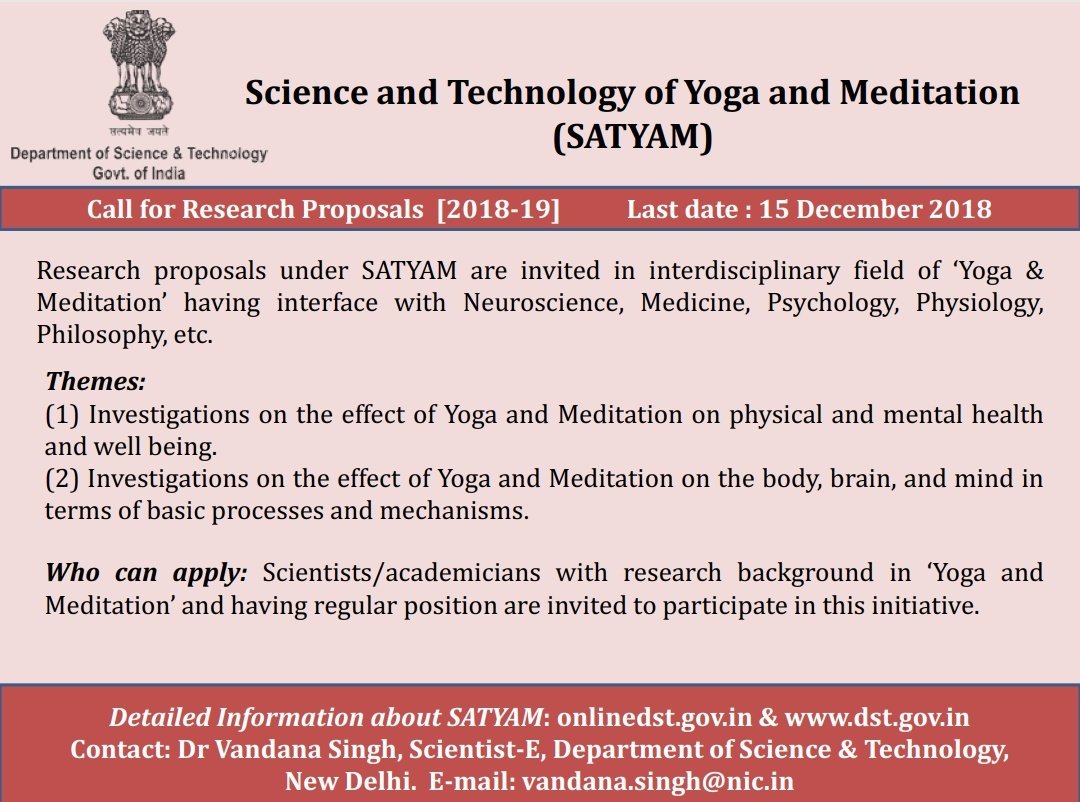
5. 30 ‘foreigners’ dead in detention
Information in News
- The official list shows 16 of the declared foreigners (DFs) who died in detention were Hindus and 14 Muslims.
- Six detention centres in as many central jails were established in 2009, four years after the contentious Illegal Migrants (Determination by Tribunal) Act of 1983 was scrapped for suspected foreigners to be tried under the Foreigners’ Act of 1946.
- Dibrugarh, Goalpara, Jorhat, Kokrajhar, Silchar and Tezpur have one detention centre each.
- There is no surprise in the fact that they are Bengalis.
- Most inmates are supposed to be from neighbouring Bangladesh [who migrated after the creation of the country in 1971] and some from Nepal, who find some protection under the Indo-Nepal Treaty (1950).
Preventive detention
- Preventive detention means to detain a person so that to prevent that person from commenting on any possible crime or in other words preventive detention is an action taken by the administration on the grounds of the suspicion that some wrong actions may be done by the person concerned which will be prejudicial to the state.
- Preventive Detention is the most contentious part of the scheme fundamental rights in the Indian constitutions Article 22(3) provides that if the person who has been arrested or detained under preventive detention laws then the protection against arrest and detention provided under article22 (1) and22 (2) shall not be available to that person.
Object of the Preventive Detention
The object of Preventive Detention is not to Punish but to prevent the detenu from doing something which is prejudicial to the State.
Grounds for Preventive Detention
Preventive detention can, however, be made only on four grounds.
The grounds for Preventive detention are:
- Security of state,
- maintenance of public order,
- maintenance of supplies and essential services and defense,
- Foreign affairs or security of India.
A person may be detained without trial only on any or some of the above grounds. A detainee under preventive detention can have no right of personal liberty guaranteed by Article 19 or Article 21.
Safeguards Provided In Constitution
To prevent reckless use of Preventive Detention, certain safeguards are provided in the constitution.
- A person may be taken to preventive custody only for 3 months at the first instance. If the period of detention is extended beyond 3 months, the case must be referred to an Advisory Board consisting of persons with qualifications for appointment as judges of High Courts. It is implicit, that the period of detention may be extended beyond 3 months, only on approval by the Advisory Board.
- The detainee is entitled to know the grounds of his detention. The state, however, may refuse to divulge the grounds of detention if it is in the public interest to do so. Needless to say, this power conferred on the state leaves scope for arbitrary action on the part of the authorities.
- The detaining authorities must give the detainee earliest opportunities for making representation against the detention.
Reference
6. Congo records second Ebola
Information in News
- Democratic Republic of Congo recorded a second Ebola death in days following more than seven weeks without a new case, the World Health Organization (WHO) said on Sunday.
- Flare-ups or one-off transmissions are common towards the end of Ebola outbreaks.
- Ebola causes fever, bleeding, vomiting and diarrhoea and spreads among humans through bodily fluids. During this outbreak it killed about two thirds of those it infected.
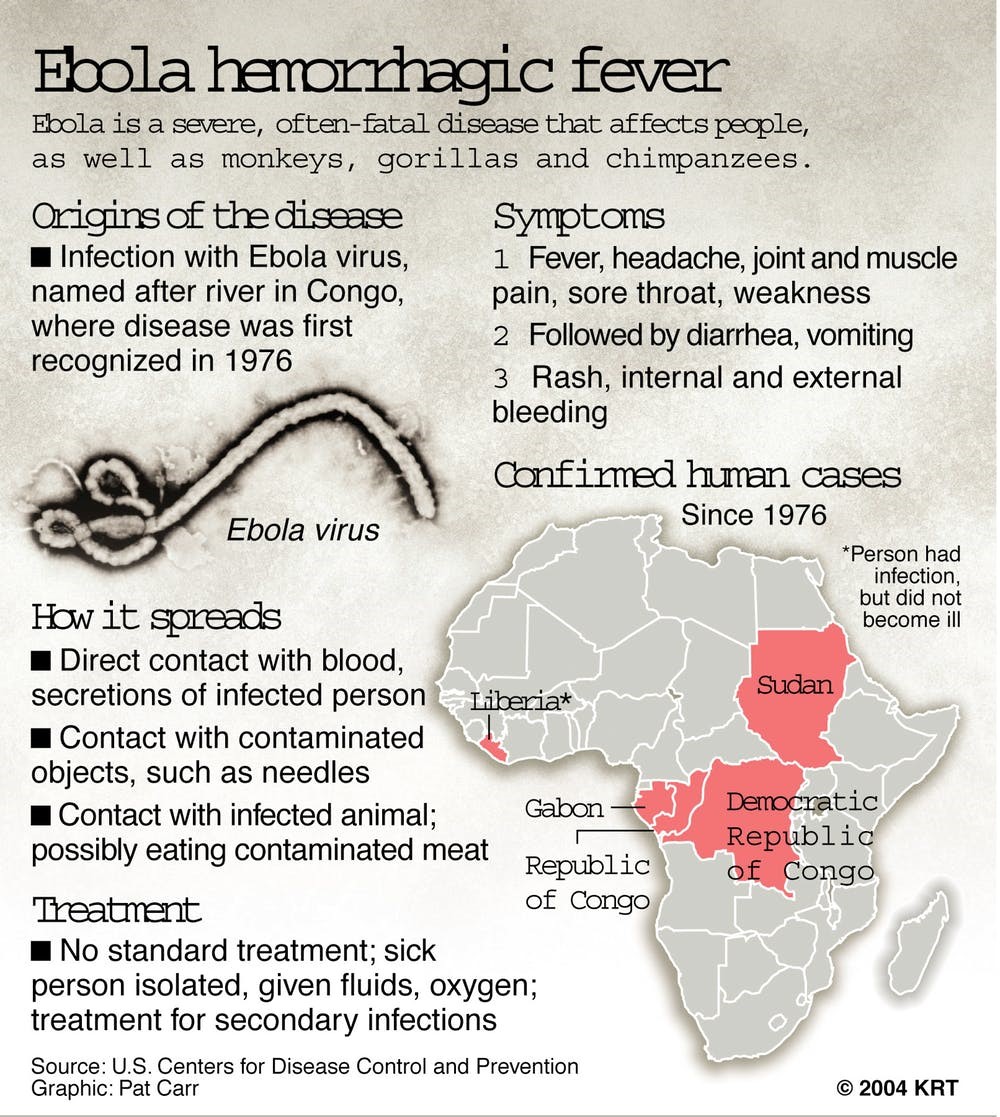
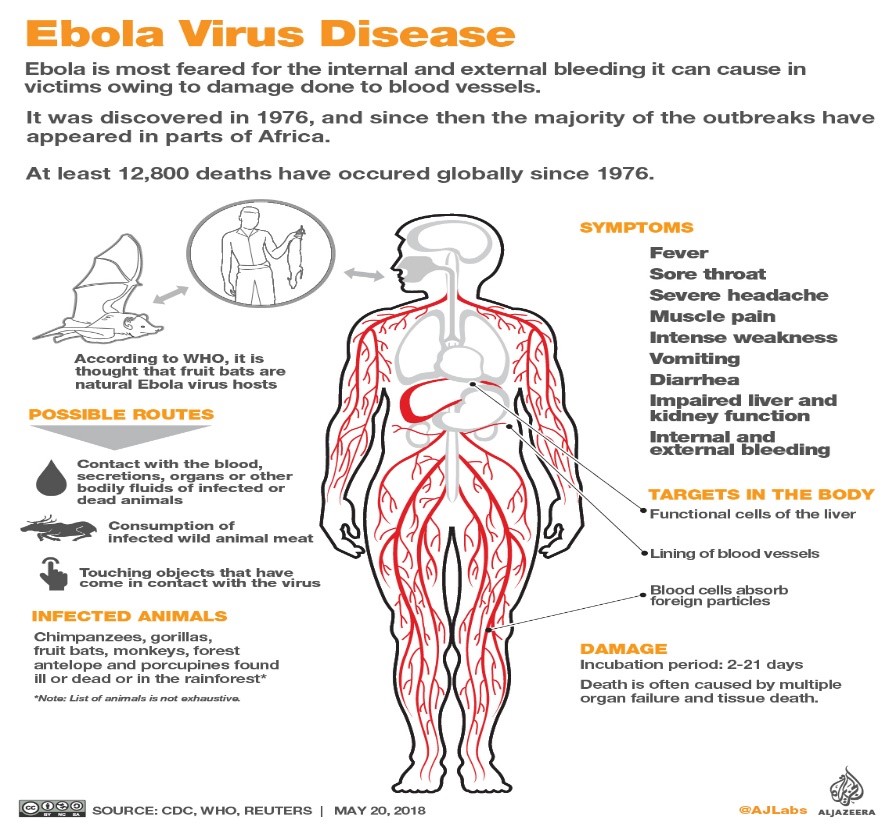
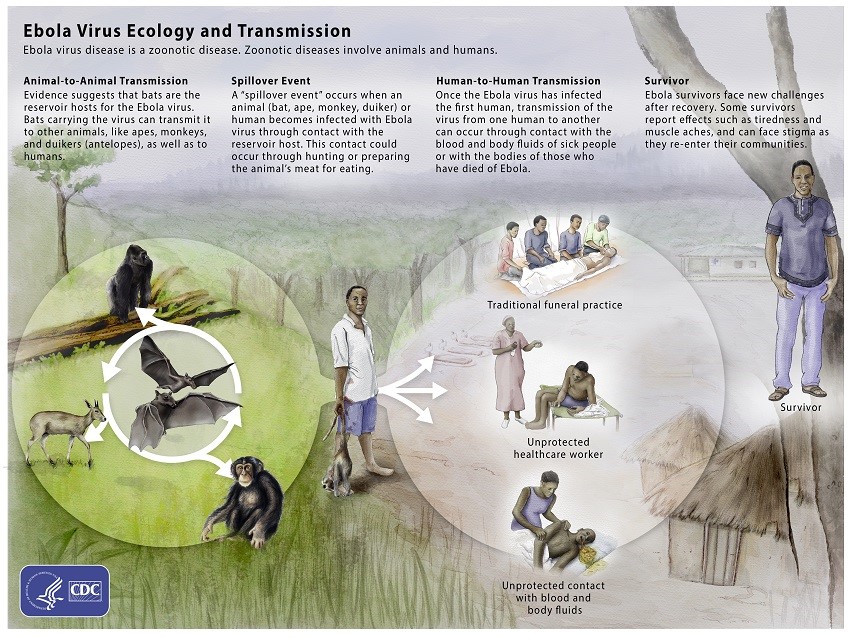
Reference
7. First batch of Rafales likely to fly in late
Information in News
- The arrival of the first batch of Rafale fighter jets for the Indian Air Force is likely to be delayed by around three months due to the COVID-19 pandemic, as France battles rising infections and deaths, and continuing lockdown restrictions, which have also impacted the training schedule, defence sources said.
- In October 2019, on a visit to France for the second India-France ministerial-level annual defence dialogue, Defence Minister Rajnath Singh took formal delivery of the first Rafale jet built for the IAF at the Dassault Aviation’s facility in Merignac.
- The jets were scheduled to arrive in India by May 2020.
- In November, Minister of State for Defence Shripad Naik said in a written reply to Parliament that three Rafale aircraft have been handed over to the IAF.
- By May 2020, 24 IAF pilots along with engineers and technicians were scheduled to be trained on the Indian jets in France. Three IAF pilots and two technical officers were trained earlier on French Air Force (FAF) Rafales as per the terms of the contract.
History of Rafale
- India has contracted 36 Rafale multi-role fighter jets from France in fly-away condition with 13 India Specific Enhancements (ISE) under a €7.87 billion Inter-Governmental Agreement (IGA) signed in September 2016.
- As per the IGA, deliveries begin 36 months from signing of contract and will be completed in 67 months.Last September, the IAF had resurrected the 17 Squadron ‘Golden arrows’ at Air Force station Ambala which will operate the first Rafale squadron while the second squadron would be based at Hasimara in West Bengal. The Indian standard Rafale with all ISE is operationally expected to be ready latest by September 2021.



Reference
8. Trade in tatters
Information in News
The WTO expects global goods trade volume to slump by as much as 32% in 2020.
- The only certainty right now in a pandemic-gripped world is the all-enveloping uncertainty.
- And the WTO acknowledged as much when it released its outlook for global trade last week.
- Projecting merchandise trade to plummet by anywhere between 13% and 32% in 2020, it added a categoric caveat: at the moment, it is only able to posit a wide range of possible trajectories for the predicted decline in trade given the unprecedented nature of the health crisis caused by the COVID-19 outbreak and the uncertainty around its precise economic impact.
- Economists at the WTO, however, appear more certain that the disruption and resultant blow to trade will in all likelihood be far worse than the slump brought on by the global financial crisis of 2008.
- As IMF Managing Director Kristalina Georgieva observed on April 9, the global economy is set to contract sharply in 2020, with “the lockdown needed to fight” the pandemic affecting billions worldwide.
- The tight restrictions on movement and social distancing norms across geographies have led to severe curbs on labour supply, transport and travel and the shuttering of whole sectors from hotels and non-essential retail to tourism and significant parts of manufacturing.
- The WTO expects all regions, save Africa, West Asia and the Commonwealth of Independent States, to suffer double-digit declines in exports and imports this year even under its “optimistic scenario”, which postulates a recovery starting in the second half.
- The WTO and the IMF chief have pointed to the fact that unlike the recession that accompanied the global financial crisis just over a decade ago, the current downturn is unique.
- Global supply chains have increased in complexity, especially in industries such as electronics and automotive products, making them particularly vulnerable to the current disruptions, with countries that are a part of these value linkages set to find trade more severely impacted.
- Also, services trade in which India has a higher global share as an exporter ($214 billion, or 3.5%, in 2019) than in merchandise exports may be significantly affected by the transport and travel curbs.
- A small sliver of silver in this bleak outlook for services trade is the role that the WTO sees for information technology services as companies try to enable employees to work from home and people order essentials and drugs online and socialise remotely.
- India’s IT exporters have been busy supporting their overseas clients’ business continuity plans in the face of the pandemic and may find this hand-holding at a time of dire need earning them loyalty-linked business when economic activity revives.
- Still, as the WTO chief, Roberto Azevêdo, crucially observes, a rebound in global economic activity will require trade to flow freely across borders as vitally as any fiscal or monetary stimulus.
- The world will be best served if nations do not turn insular and erect new barriers to the movement of goods, services and people in the aftermath of the pandemic.
PDF Download Here
Tags : current affairs 2020 100, current affairs 2020 jan, current affairs 2020 pdf, current affairs 2020 quiz, current affairs 2020 hindi, current affairs 2020 india, current affairs 2020 today, current affairs 2020 nigeria, current affairs 2020 questions, current affairs 2020 in tamil, current affairs 2020 gk today, current affairs 2020 in english, current affairs 2020 gd topics, current affairs 2020 pdf download, current affairs 2020 in hindi pdf, current affairs 2020 questions and answers, current affairs 2020 january in affairs cloud,TNPSC Current Affairs 2020, current affairs in tamil, best current affairs for tnpsc exams, tnpsc group 4 current affair, tnpsc group 2 current affairs, tnpsc group 2a current affairs, tnpsc group 1 current affairs, tnpsc current affairs 2019

